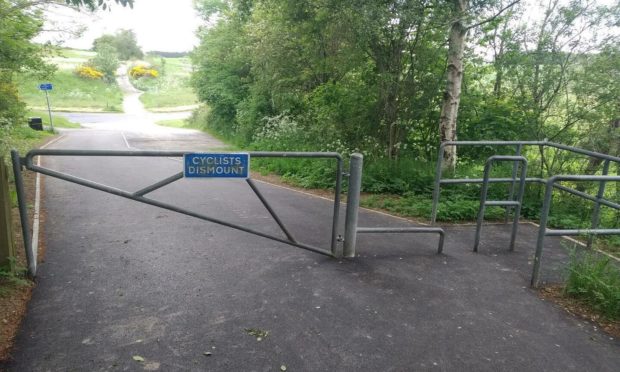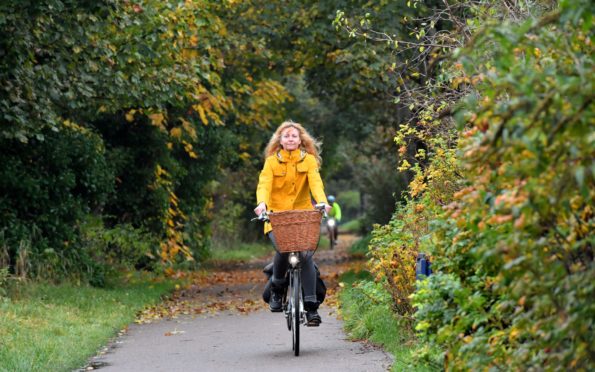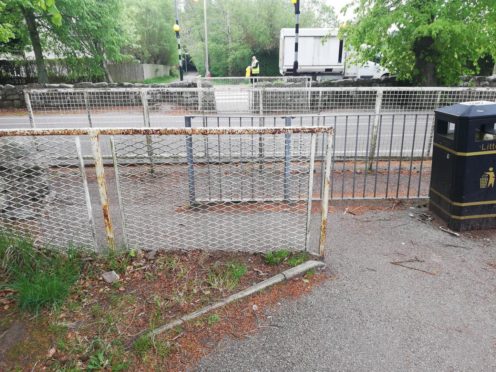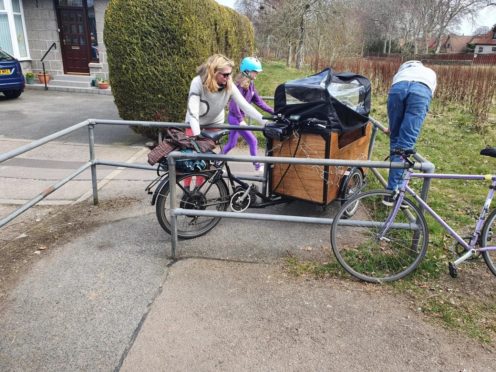Have you ever cycled around Aberdeen and found yourself forced to dismount to navigate a tricky barrier, gate or bollard plonked in the middle of a designated path?
Well, you’re far from the only one.
Aberdeen Cycle Forum members are fed up with badly designed barriers making certain routes difficult, or in some cases impossible, for visitors on wheels.
‘Bizarre’ obstacles on Aberdeen cycle routes
“The whole idea that you have to stop and engage in the physical effort to manoeuvre, lift or carry your bike through an obstacle is bizarre,” said Rachel Martin, campaign secretary for Aberdeen Cycle Forum.
“And this doesn’t just affect bikes, but also those riding adapted cycles, families with prams and people with wheelchairs or mobility scooters.”
The group have now set up a campaign to make Aberdeen more accessible, and are asking residents in both the city and the shire to highlight any examples of paths that are difficult to use by anyone on wheels.
This can be anything from a lack of drop kerbs, paths being narrowed by excessive bollards, staggered gates and metal barriers that limit turning space.
“It’s unacceptable for someone with a wheelchair or cargo bike to have to navigate tight chicanes,” said Rachel.
“In some instances, there’s even the assumption that they must lift their contraption over a steel barrier which is obviously impossible for most of us especially if we’re out travelling alone.”
Historic and outdated infrastructure
Rachel has experienced these problems several times first-hand.
Most recently she was cycling her cargo bike – a bike specially designed to carry a large load – with her kids in the passenger seat when a metal barrier near Hazlehead Park obstructed her path.
It was not large enough to let her pass through and the bike became stuck.
“The corner was very tight and we were stuck for a good 10 minutes,” she said.
“The cargo bike is obviously heavy and I couldn’t lift it myself, so it really got me thinking what someone in a wheelchair or mobility scooter might do.”
Metal chicanes like this are usually in place to stop cars and motorcycles from entering and Rachel appreciates that they are necessary in certain situations.
“I know they aren’t there just to make like difficult, but there are better ways to do this,” she said.
Cycle paths should ‘not require cyclists to dismount’
Scottish Cycling by Design guidelines state that cycle paths must be coherent and “not require cyclists to dismount to cross footways and other barriers or take unnecessary detours.”
In England the guidance goes even further and specifically refers to the Equality Act 2010, stating that anything which may prevent access for larger cycles and disabled people should not be used.
“A lot of these designs we are talking about are historic,” Rachel said. “They wouldn’t be built now with current guidelines but they still exist out there.
“We need to catch up to the regulations.”
Chikane/barrier photo safari to Aden Country Park – Formartine and Buchan Way #MakeAberdeenAccessible. Approx. 50 km of gravel one way (chuckies about 3km before and after Ellon). Barriers galore😱🤯🧐🤔 pic.twitter.com/6NUEdjHDUJ
— Dr Hanne Bruhn (she/her) (@Bruhn_Hanne) June 21, 2021
The Aberdeen Cycle Forum would like to hear from people who have encountered barriers like these. Images and locations can be submitted here.
The forum is also encouraging people to highlight the problems via Twitter, Instagram, or Facebook using the hashtag #MakeAberdeenAccessible.
Examples do not need to be related to cycling only, but can include walking and wheeling, with everyone from wheelchair users to parents with prams invited to take part.



